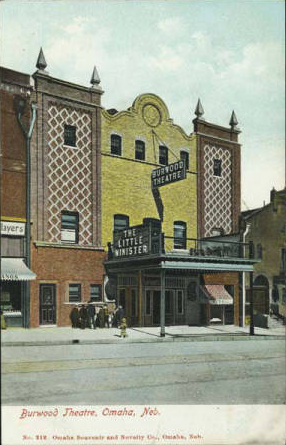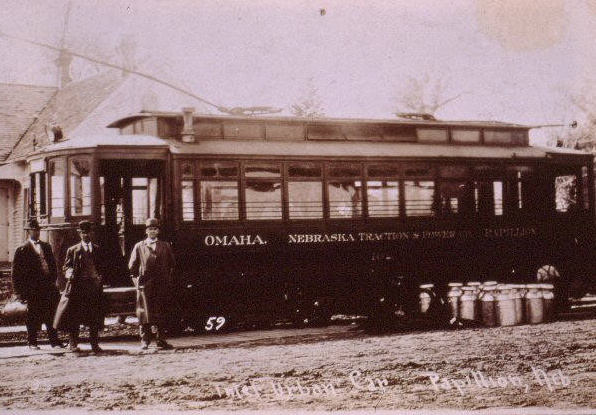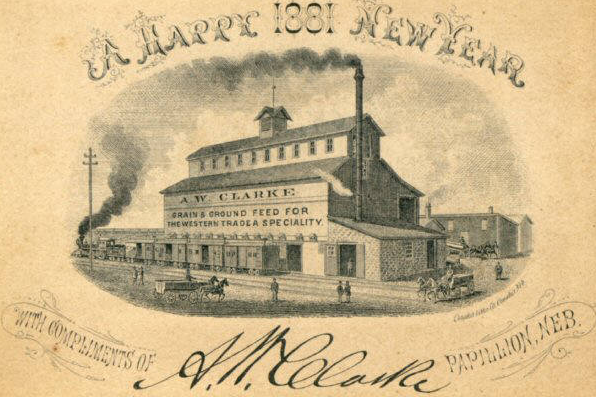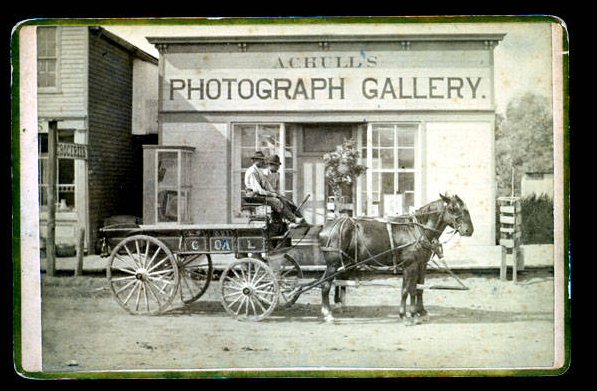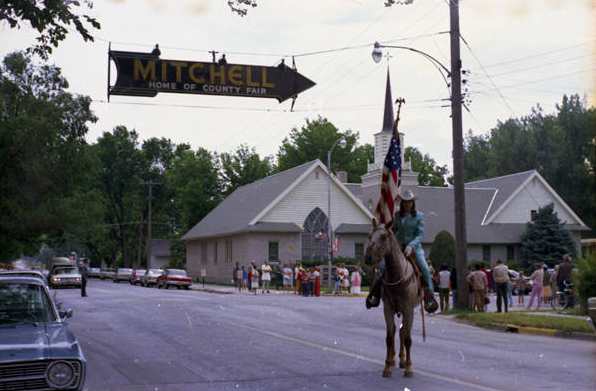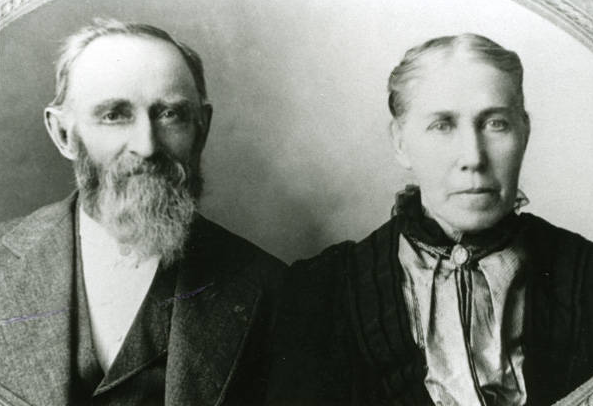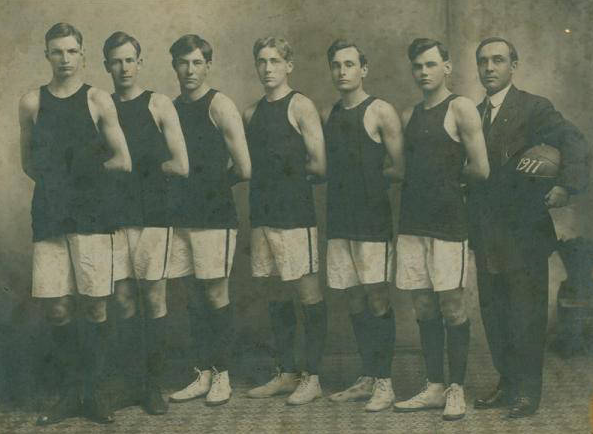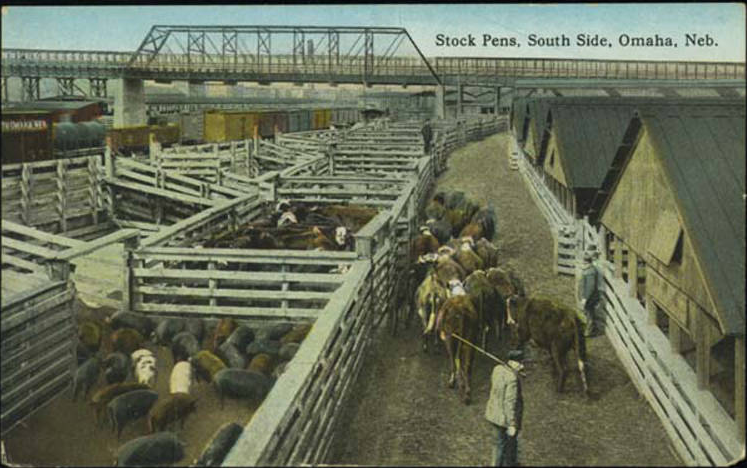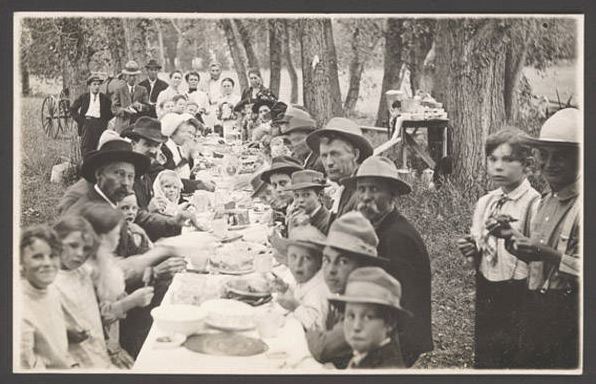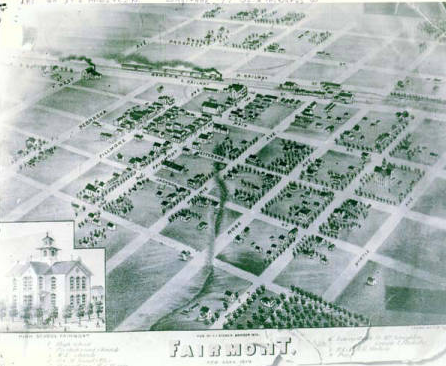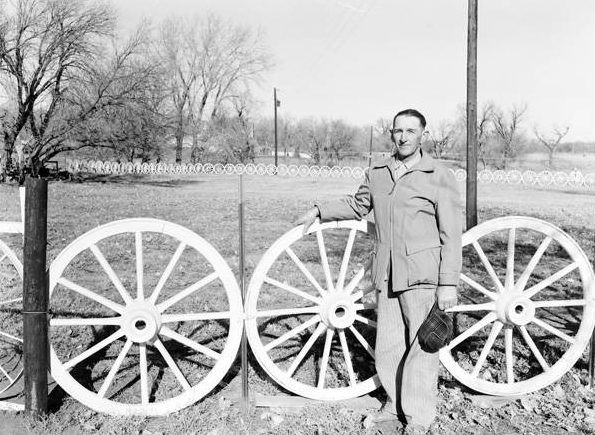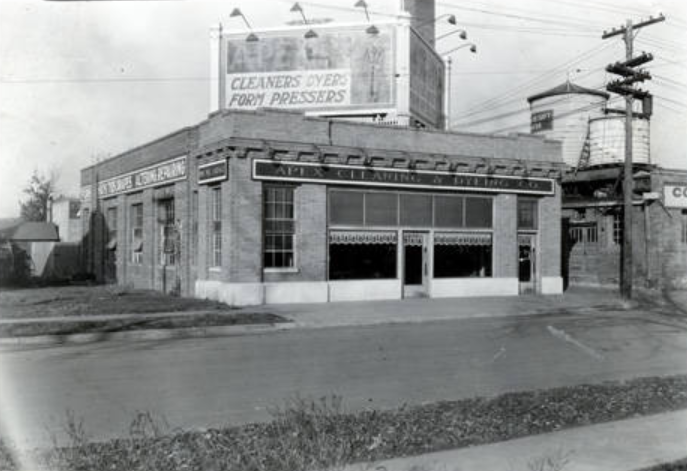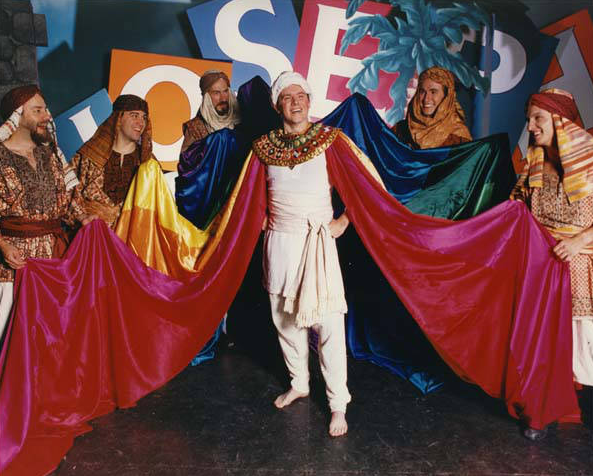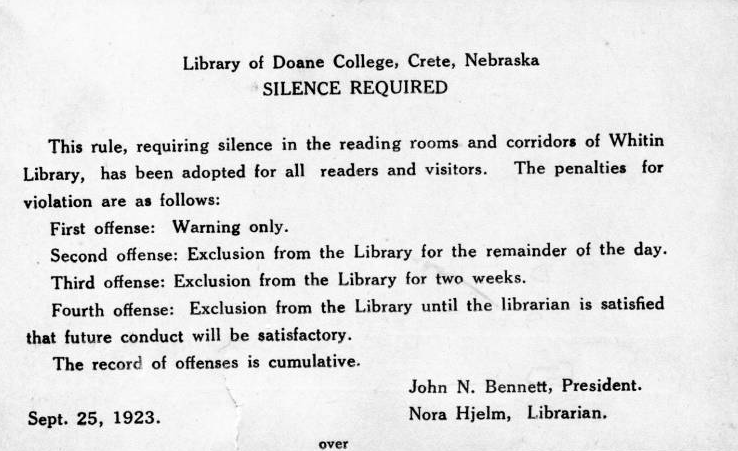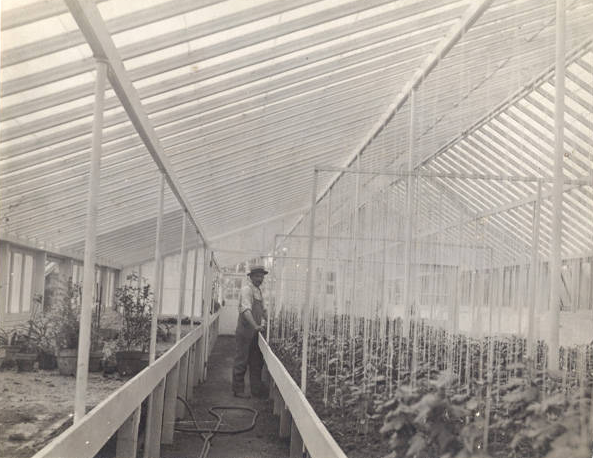Search the Blog
Categories
- Books & Reading
- Broadband Buzz
- Census
- Education & Training
- Friday Reads
- General
- Grants
- Information Resources
- Library Management
- Nebraska Center for the Book
- Nebraska Libraries on the Web
- Nebraska Memories
- Now hiring @ your library
- Preservation
- Pretty Sweet Tech
- Programming
- Public Library Boards of Trustees
- Public Relations
- Talking Book & Braille Service (TBBS)
- Technology
- Uncategorized
- What's Up Doc / Govdocs
- Youth Services
Archives
Subscribe
Tag Archives: Nebraska History
Book Club Spotlight – The Twilight of the Sioux
Born in Sharpsburg, Illinois, in 1881, acclaimed “Prairie Poet of America” and UNL professor John G. Neihardt spent his early adulthood in Bancroft, Nebraska, near the Omaha Reservation. During that time, he became interested in the Westward Expansion and the subsequent displacement of Indigenous people during the American Indian/ Frontier Wars. As a lyrical poet, Neihardt spent 30 years composing a two-volume series of epic poems (songs), known as The Cycle of the West. Volume 1, The Mountain Men, focuses on the first non-native people to explore the West. While Volume 2, The Twilight of the Sioux, depicts the colonization of the American West from 1822 to 1890, through its poems, “The Song of the Indian Wars” and “The Song of the Messiah”, ending at the Wounded Knee Massacre.
Neihardt’s Black Elk Speaks, is considered controversial and inflated by some Lakota people and scholars. Similarly, some language, and beliefs in The Twilight of the Sioux, may be outdated, but Neihardt’s intentions remain in his lyrics.
The Song of the Indian Wars
Following the last push of the Plains tribes to drive out colonizers from the land between the Missouri and the Pacific, this is a tale of battle and warriors. We follow Chief Red Cloud as the Bozeman War makes its way through the Great Plains. Written less than a century after the events, Neihardt pulls from primary sources, interviewing and taking the perspective of veterans, both white and Native American into his sprawling account.
The Song of the Messiah
In the second song, we find the Plains tribes in low morale and destitution until there was a revival of hope brought about by the guidance of a spiritual leader and Paiute prophet Wovoka. Following his instructions in “The Messiah Letter”, the Ghost Dance Movement of 1890 combined old and new teachings to call upon the spirit world to restore peace and the earth to its uncolonized state. The movement grew as thousands danced unceasingly until the American army, scared of their power, burst into deadly action. Written only 35 years after the massacre, Neihardt invokes Christian iconography throughout this song, describing the massacre as the “crucifixion of a people”, with Wovoka as the messiah figure, and Wounded Knee as a new Golgotha.
“How can I know that I know anything?
John G. NEihardt
The coming of the grasses in the spring-
Is it not strange so wonderful a tale
Is really true? Did mornings ever fail,
Or sleeping Earth forget the time to grow?
How do the generations come and go?
They are, and are not. I am half afraid
To think of what strange wonders all is made!
And shall I doubt another if I see?”
Twilight of the Sioux is a masterpiece in poetry and prose. But it’s also an important history lesson in the latter half of Native American Heritage Month. It’s fascinating to read an artistic account of the American Frontier Wars, penned by a contemporary only a few dozen years later. Wanting to write on the human condition, especially the social and emotional change of coming into adulthood, Neihardt found that America was also in a world of change and growth, describing it as a “strange new world that is being born in agony”. Though there are no specific discussion questions regarding this title for Book Club Groups, Twilight of the Sioux is considered an educational staple, filled with opportunities to learn and discuss the history of Westward Expansion and Neihardt’s particular writing style.
Even though this tale ended in bloodshed, Neihardt knew the story wasn’t over, believing that “All spiritual truths triumph in this world through apparent defeat” (x). He had faith in the continued spirit of the Native American people and their perseverance after the end of the American Frontier Wars. Today, the Nebraska Library Commission sits on the ancestral land of the Pawnee and Otoe-Missouria, and despite the systemic and brutal erasure of their lives and homeland, Native Americans were and still are stewards of this land; with Indigenous lead movements today like The Water Protector Legal Collective, NDN Collective, and a continued push for sovereignty.
Related Listening:
- Introduction to A Cycle of the West – an interview with John Neihardt
- Wovoka – Redbone
- We Were All Wounded At Wounded Knee – Redbone
If you’re interested in requesting Twilight of the Sioux or your book club, you can find the Request Form here. There are 9 copies. (A librarian must request items)
Neihardt, John G. Twilight of the Sioux. Macmillan Company. 1948
Posted in Books & Reading
Tagged book club spotlight, books, John G. Neihardt, Nebraska History, Reading
Leave a comment
#BookFaceFriday “Creative Genius: The Art of the Nebraska Capitol”
Life imitates art with #BookFaceFriday!
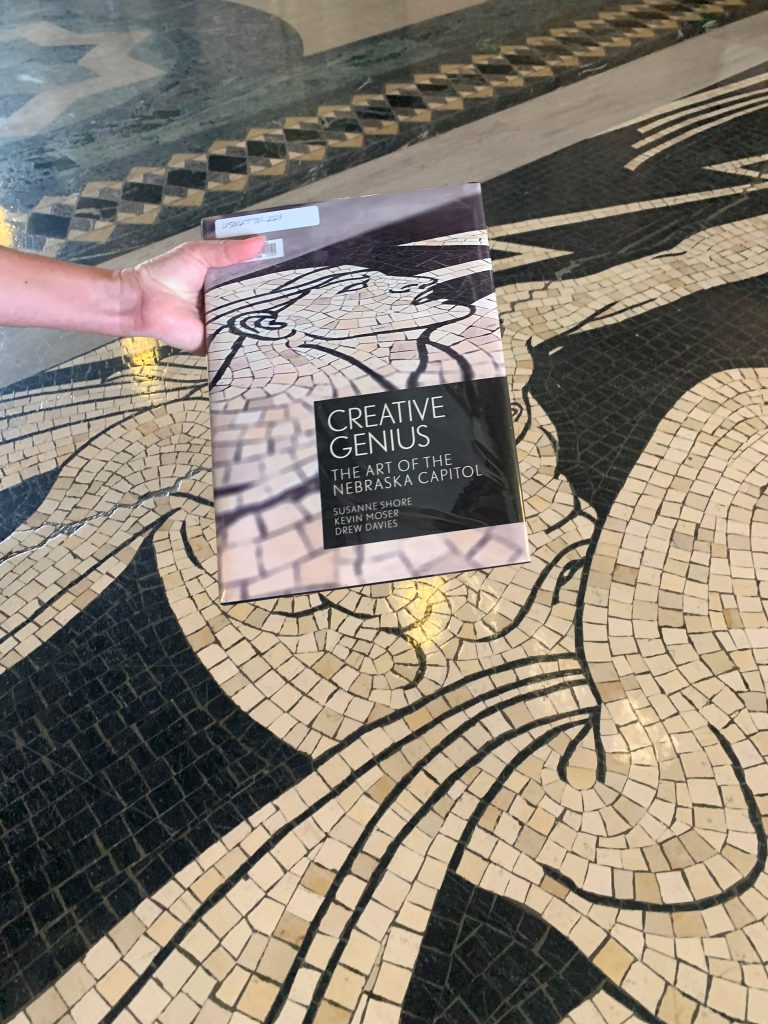
The surprisingly complex task of photographing the surprisingly complex photography of this #BookFaceFriday was a challenge. While nothing can compare to seeing it in person, this week’s #BookFace is an excellent way to bring a little of the Nebraska Capitol’s beauty and history into your own home. “Creative Genius: The Art of the Nebraska Capitol” by by Susanne Shore, Kevin Moser, Drew Davies, with a foreword by Robert C. Ripley, is available as a part of our Nebraska State Documents Collection.
One of the most prestigious academic presses in the country, the University of Nebraska Press sends us around 75 select titles per year, which are added to the Nebraska Publications Clearinghouse, also known as the Nebraska State Documents Collection. This collection is comprised of publications issued by Nebraska state agencies, ensuring that state government information is available to a wide audience and that those valuable publications are preserved for future generations. University of Nebraska Press books, as well as all state documents, are available for checkout by libraries and librarians for their patrons.
“The Nebraska State Capitol may be the most beautiful capitol building in the United States. From the day it opened, it’s been recognized as an outlier relative to its forty-nine rivals. The influential leaders of American Architect certainly thought so, choosing to feature the Nebraska Capitol in the October 1934 issue soon after the building opened. In the introduction, they wrote: ‘From the engineering standpoint, the building embodies the cumulative results of American energy, inventive skill and organizing ability; and from all combined points of view, it stands as a remarkable interpretation of innumerable events that have shaped the progress of American art, industry, and democratic government.’”
—from the prologue
Love this #BookFace & reading? Check out our past #BookFaceFriday photos on the Nebraska Library Commission’s Facebook page!
Book Club Spotlight – Hector’s Bliss
A unique aspect of our Book Club Collection here at the Commission is our focus on Nebraska authors, settings, and stories, housing the hidden gems of Nebraska literature and history! Today’s pick for the Book Club Spotlight, in particular, focuses on a relatively unknown part of Nebraska’s Black History. While we know the story of white pioneers and homesteaders, there was also the incredible journey of formerly enslaved people who became landowners, farmers, and a community in the Sandhills. Hector’s Bliss: Black Homesteaders at Goose Lake, Nebraska, by Dennis Vossberg, is a historical fiction novel based on the incredible history of Black Homesteaders, who, under false pretenses, persevered in the harsh farmland until drought and the Dust Bowl overcame the whole region.
In the late 1800s, at the height of legalized racial segregation, just south of O’Neil, Nebraska, there was the short-lived story of Bliss, and the Black community members who called it home. During the economic downturn caused by the end of the Civil War, the newly freed people were looking for a reliable place to land. As newly married Hector and Julia Dixon were floundering in a small mining town, land promoters arrived, falsely promising flourishing farmland and untapped coal veins awaited them in the far reaches of the Nebraska Sandhills. The Dixons and 13 other families unknowingly move to the desert-like plains to start anew. Besought by harsh conditions, poverty, and rural isolation, their community works hard to create a solid foundation for the future despite the conditions. As one of the more educated residents, Hector Dixon finds himself wearing many hats in Bliss, as a farmer, the integrated school’s teacher, the justice of the peace, and eventually a milk road delivery man, all to support his growing and tenacious family. Striving to find a balance between the life his children dream of and the one he has worked so hard to build.
He took a lingering gaze over the peaceful countryside, thinking of how transient were the human inhabitants of this land, and how triumphantly enduring was the land itself
Dennis Vossberg
Hector’s Bliss is a moving historical fiction crafted with love and respect for the subjects, and Book Club Groups will find value in learning about this little-known Nebraska history. They may even be encouraged to learn more. Covered in the Nebraska Public Media story, “Looking for Bliss,” the story of the Dixons and Bliss is virtually unknown. Hector’s Bliss brings to light Black history that has been erased from cultural memory, revealing a more full and beautiful world. We won’t really ever know how the Black Homesteaders were treated by their white compatriots as those details have been lost to time. So, while prejudice and racism are addressed, Vossberg chooses to focus the limited peril on the indomitable human spirit and the life these people worked to build after slavery.
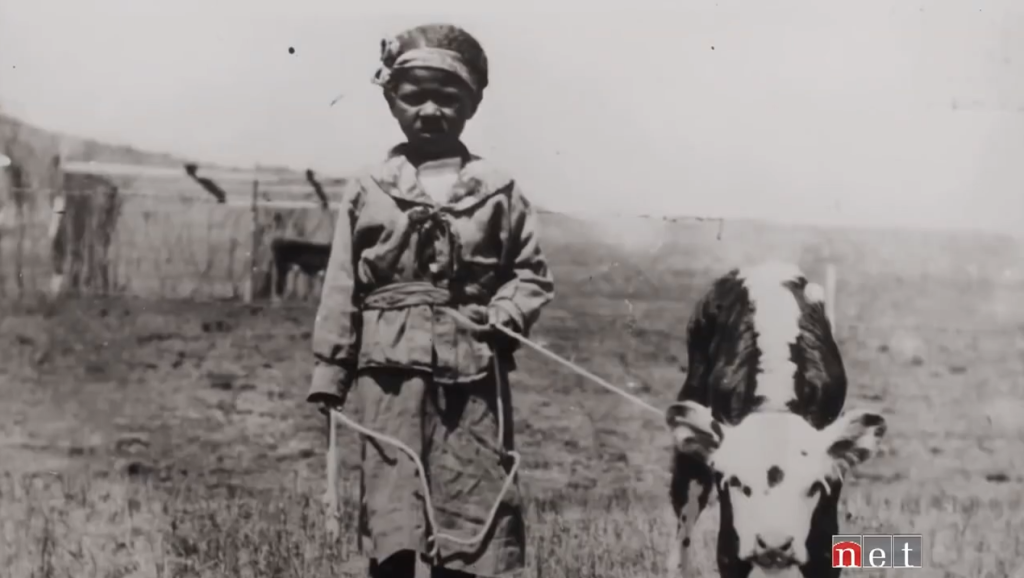
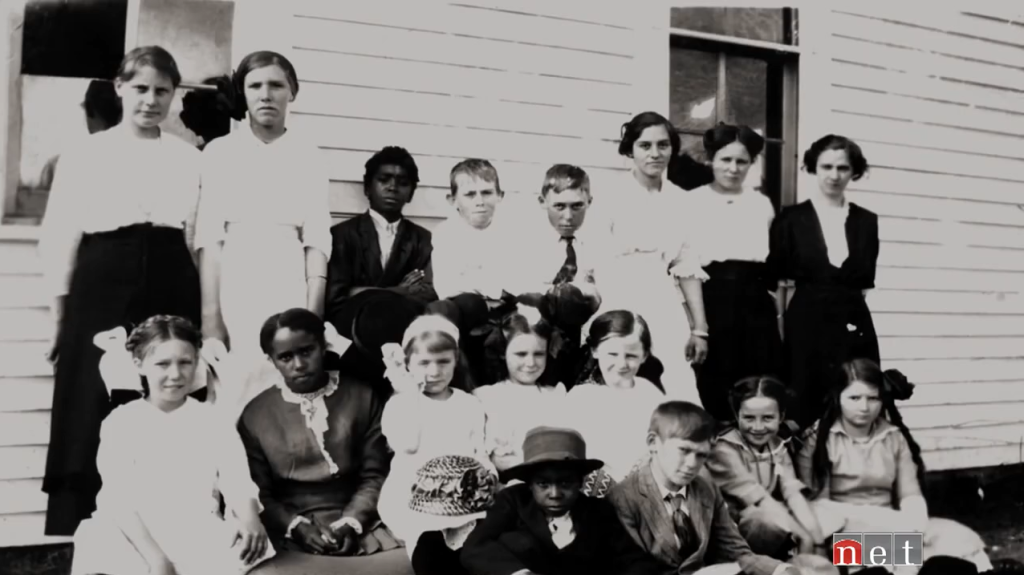
If you’re interested in requesting Hector’s Bliss for your book club, you can find the Request Form here. There are 4 copies available. (A librarian must request items)
Vossberg, Dennis. Hector’s Bliss. Morris Publishing. 2006
Posted in Books & Reading
Tagged Black History Month, book club spotlight, books, Nebraska History, Reading
Leave a comment
Throwback Thursday: African American Orchestra
Happy Black History month from Nebraska Memories, here’s another #ThrowbackThursday for you!
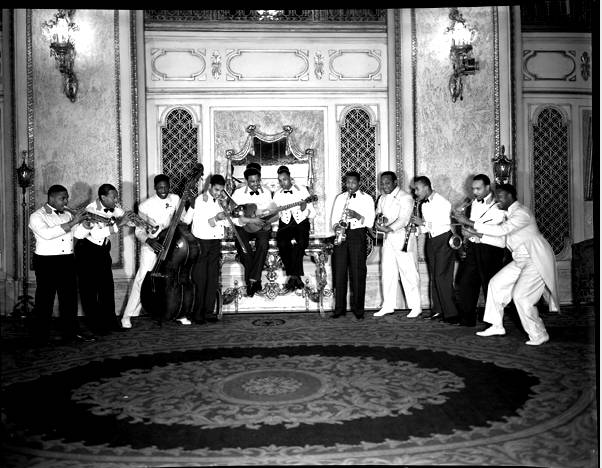
Dated December 8th 1937, this 8 x 10 acetate negative shows an orchestra of African American men playing at the Orpheum Theatre in Omaha, Nebraska. There are ten men playing a variety of instruments all being led by their conductor and his baton.
This image is published and owned by The Durham Museum and is part of the William Wentworth collection. The collection contains over 4000 photo negatives depicting life in Omaha, Nebraska from 1934 – 1950.
See this collection and many more on the Nebraska Memories archive!
The Nebraska Memories archive is brought to you by the Nebraska Library Commission. If your institution is interested in participating in Nebraska Memories, see http://nlc.nebraska.gov/nebraskamemories/participation.aspx for more information.
Throwback Thursday: Herpolsheimer Soda Fountain
Happy #ThrowbackThursday from Nebraska Memories!
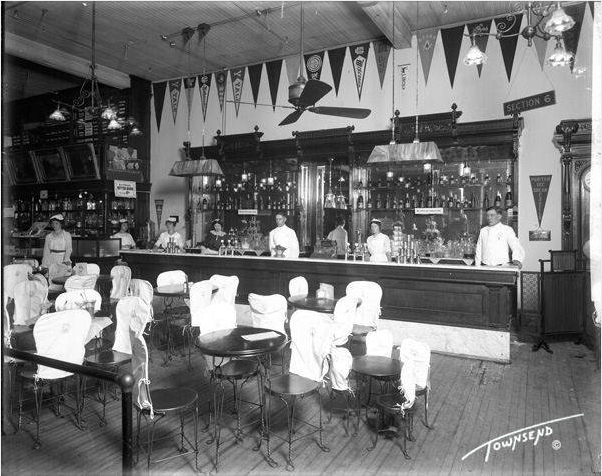
This 8 x 10 glass plate negative is a snapshot from 1915 of the soda fountain inside the H. Herpolsheimer Company department store, located on the southwest corner of N and 12th Street in Lincoln, Nebraska. Patrons of the soda fountain had a variety of treats to choose from, including: Dickinson’s maple mousse, mallow bitter sweet chocolate sundaes, puritan ice cream, Coca-Cola, old fashion butter scotch, and boxes of Vassar chocolate.
This image is published and owned by Townsend Studio, which has been in continuous operation since its foundation in 1888 in Lincoln, Nebraska. The studio holds a collection of glass plate and acetate negatives of early Lincoln and its residents.
See this collection and many more on the Nebraska Memories archive!
The Nebraska Memories archive is brought to you by the Nebraska Library Commission. If your institution is interested in participating in Nebraska Memories, see http://nlc.nebraska.gov/nebraskamemories/participation.aspx for more information.
Throwback Thursday: Burwood Theatre in Omaha, Neb.
Happy #ThrowbackThursday from Nebraska Memories!
This week, we have a 14 x 9 cm color postcard featuring the exterior of the Burwood Theatre located at 1514 Harney Street in Omaha, Nebraska.
The Burwood Theatre was built in 1906. A few years later, its name was changed to the Gayety. It became a notorious burlesque house. Civic organizations protested and finally, in 1928, the theater was closed.
This image is published and owned by Omaha Public Library. The items from Omaha Public Library in Nebraska Memories include early Omaha-related maps dating from 1825 to 1922, as well as over 1,100 postcards and photographs of the Omaha area. The Omaha Postcard Collections shows scenes of Omaha, spanning a time period from the 1890s to the 1920s.
Check out this collection and many more on the Nebraska Memories archive.
The Nebraska Memories archive is brought to you by the Nebraska Library Commission. If your institution is interested in participating in Nebraska Memories, see http://nlc.nebraska.gov/nebraskamemories/participation.aspx for more information.
Throwback Thursday: Nebraska Traction and Power Company Interurban Streetcar
It’s time for another #ThrowbackThursday from Nebraska Memories!
This black and white postcard from the early 1900s features an electric streetcar with reversible navigation controls. Nebraska Traction and Power Company began the streetcar service between Papillion and Omaha, Nebraska, in 1911.
This image is published and owned by the Sarpy County Historical Museum. The Sarpy County Historical Museum is located in Bellevue and has the mission of collecting, preserving, and displaying objects and documentary records related to Sarpy County.
Check out all the collections on the Nebraska Memories archive.
The Nebraska Memories archive is brought to you by the Nebraska Library Commission. If your institution is interested in participating in Nebraska Memories, see http://nlc.nebraska.gov/nebraskamemories/participation.aspx for more information.
Throwback Thursday: A.W. Clarke Grain & Ground Feed 1881 New Year’s postcard
It’s the first #ThrowbackThursday of the new year!
This week, we have an 1881 New Year’s postcard sent by the A.W. Clarke Grain and Feed of Papillion, Nebraska. The card shows a grain elevator with a locomotive pulling train cars. Original card was printed by the Omaha Litho Co.
This postcard is published and owned by the Sarpy County Historical Museum. Located in Bellevue, Nebraska, the Sarpy County Historical Museum’s mission includes collecting, preserving, and displaying objects and documentary records related to Sarpy County.
See this collection and many more on the Nebraska Memories archive!
The Nebraska Memories archive is brought to you by the Nebraska Library Commission. If your institution is interested in participating in Nebraska Memories, see http://nlc.nebraska.gov/nebraskamemories/participation.aspx for more information.
Posted in General, Nebraska Memories, Preservation
Tagged Nebraska History, Nebraska Memories, Postcard, Throwback Thursday
Leave a comment
Throwback Thursday: A. C. Hull’s Photograph Gallery
Happy #ThrowbackThursday from Nebraska Memories!
Featured in this week’s #throwback is A. C. Hull’s Photograph Gallery. A. C. Hull opened his Fremont studio in 1870 and continued work as a photographer until 1893. He traveled with William Henry Jackson in 1869, capturing scenes of the building of the Union Pacific on photographic glass plates.
This image is owned by the Dodge County Historical Society and is published to Nebraska Memories by Keene Memorial Library in Fremont, Nebraska. Keene Memorial Library and the Dodge County Historical Society worked as partners to digitize and describe content owned by the historical society. The collection of photographs documents life in Fremont in the late 1800s and early 1900s. Local businesses, churches, schools, and private residences are all featured.
Check out the collection on the Nebraska Memories archive.
The Nebraska Memories archive is brought to you by the Nebraska Library Commission. If your institution is interested in participating in Nebraska Memories, see http://nlc.nebraska.gov/nebraskamemories/participation.aspx for more information.
Posted in General, Nebraska Memories, Preservation
Tagged Nebraska History, Nebraska Memories, Throwback Thursday
Leave a comment
Throwback Thursday: Mitchell’s Bicentennial Celebration
It’s another #ThrowbackThursday from Nebraska Memories!
This week, we have a 1 1/2″ x 1″ color acetate negative featuring a scene from Mitchell’s Bicentennial celebration hosted in 1976.
This image is published and owned by Mitchell Public Library. Local historian Jane Hills Bowman collected pictures and stories about Mitchell’s early years. Her collection includes street scenes from the early 1900s that are some of the earliest images of Mitchell’s business district. The collection also contains photographs of Mitchell’s first public school buildings.
Check it out on the Nebraska Memories archive.
The Nebraska Memories archive is brought to you by the Nebraska Library Commission. If your institution is interested in participating in Nebraska Memories, see http://nlc.nebraska.gov/nebraskamemories/participation.aspx for more information.
Throwback Thursday: James Wareham Streeter and Mary Anderson Streeter
Happy #ThrowbackThursday from Nebraska Memories!
The families of Bess Streeter Aldrich’s parents, James and Mary Streeter, were the inspiration for the characters in several of her fictional works. Aldrich wrote: “When she was in her eighties, (mother) once related some pioneer experiences about the snow sifting through the chinks of the cabin and making grotesque figures on the bed quilts. In a moment of sympathy I remarked that we daughters were sorry her life had been hard in her pioneering days, that it seemed unfair that we now should live in an easier era with all its modern conveniences. She looked at me with an odd little expression and said: ‘Oh, save your pity. We had the best time in the world.'” Aldrich’s desire to capture the spirit of such a woman with historical accuracy was the inspiration for the novel “A Lantern in Her Hand.”
This portrait photograph is published and owned by the Bess Streeter Aldrich Foundation. The images in this collection have been selected to give the viewer a deeper understanding of the influences and inspirations that Bess Streeter Aldrich drew upon when writing the 1928 novel “A Lantern in Her Hand.”
Check out the full collection on the Nebraska Memories archive.
The Nebraska Memories archive is brought to you by the Nebraska Library Commission. If your institution is interested in participating in Nebraska Memories, see http://nlc.nebraska.gov/nebraskamemories/participation.aspx for more information.
Throwback Thursday: 1911 Basketball Team
Basketball season in Nebraska is underway and we’re celebrating with this week’s #ThrowbackThursday!
This week, we have a black and white photograph featuring the 1911 basketball team at Nebraska Normal College, now known as Wayne State College. Wayne State College is one of three state colleges in Nebraska and the institution held its first session on September 19, 1910.
This image is published and owned by Wayne State College. In a continuing effort to preserve and make accessible photographs depicting the history of Wayne State College and the region it serves, the Wayne State College Library has digitized selected photographs from its archives. Included in this collection are photographs from the early 1900s that show the buildings and grounds of the campus, athletic teams, the Student Army Training Corps, and others.
Find more sports-related materials on the Nebraska Memories archive!
The Nebraska Memories archive is brought to you by the Nebraska Library Commission. If your institution is interested in participating in Nebraska Memories, see http://nlc.nebraska.gov/nebraskamemories/participation.aspx for more information.
Throwback Thursday: Stock Pens, South Omaha
Happy #ThrowbackThursday from Nebraska Memories!
Few industries say “Omaha” like the stockyards. The stockyards began in 1883 when Wyoming cattle baron, Alexander Swan, wanted a livestock market closer than Chicago. Together with six local businessmen, he formed the Union Stockyards on December 1, 1883. The livestock pens covered acres of land. Between 1907 and 1910, most of the old pens were rebuilt with elevated walkways. Buyers could then view the animals without threading their way through the pens. In the early 20th century, Union Stockyards was the world’s largest sheep market. The stock yards were dependent upon Union Pacific Railroad to bring livestock to market. On average, 20,000 animals per day arrived at the Union Stockyards.
This 14 x 9 cm color postcard is published and owned by Omaha Public Library. The items in this collection include early Omaha-related maps dating from 1922 back to 1825, as well as over 1,000 postcards and photographs of the Omaha area.
See this collection and more on the Nebraska Memories archive.
The Nebraska Memories archive is brought to you by the Nebraska Library Commission. If your institution is interested in participating in Nebraska Memories, see http://nlc.nebraska.gov/nebraskamemories/participation.aspx for more information.
Throwback Thursday: Outdoor Picnic
It’s a Thanksgiving themed #throwback from Nebraska Memories!
This week, we have a black and white postcard from the early 1900s featuring a group of men, women, and children having a picnic.
This image was captured by John Nelson and is published by History Nebraska.History Nebraska digitized content from the John Nelson collection. John Nelson was born in Sweden and came to Nebraska at 17 years old alongside his parents. His photos show small town life in Nebraska during the early 20th century. He shot photographs of local businesses, community activities, and automobiles.
Check out this collection and many more on the Nebraska Memories archive.
The Nebraska Memories archive is brought to you by the Nebraska Library Commission. If your institution is interested in participating in Nebraska Memories, see http://nlc.nebraska.gov/nebraskamemories/participation.aspx for more information.
Throwback Thursday: Fairmont, Nebraska
It’s another #ThrowbackThursday from Nebraska Memories!
This week, we have an early 1879 drawing of Fairmont, Nebraska by J.J. Stoner. It is published and owned by Fairmont Public Library. Together in partnership with the Fillmore County Historical Society, the Fairmont Public Library digitized photographs from their collections depicting the history of Fillmore County. The photographs in this collection include images of local businesses, schools, and churches, as well as the Fairmont Army Airfield, which was used during World War II.
Check it out on the Nebraska Memories archive.
The Nebraska Memories archive is brought to you by the Nebraska Library Commission. If your institution is interested in participating in Nebraska Memories, see http://nlc.nebraska.gov/nebraskamemories/participation.aspx for more information.
Throwback Thursday: Ernie Nozicka
Happy #ThrowbackThursday from Nebraska Memories!
This week, we have a 3″ x 5″ on-site photograph of Ernie Nozicka at his home near Bruno, Nebraska. Ernie was born near Bruno on June 11, 1898, the son of Matej and Frances Smejkla Nozicka. He married Rose Krepcik and after she died in 1972, married Julia Strudl. He farmed northeast of Bruno for 60 years and his place was known as the “Wagon Wheel Farm”. He had over 300 white wagon wheels with fencing lining both sides of the lane to his home and along the main road north of his farm. He started farming with six head of horses and never owned a tractor. In the 1930’s and 1940’s he broke horses for riding and farm work. He supplemented his income by working as the township overseer of Skull Creek. He was also a real estate broker and served on the Bruno School Board. He entertained people with his accordion music for over 75 years and often drove a team of horses or mules with a decorated buggy in local parades.
This 1950’s image is published as part of the Boston Studio Project and is owned by the Thorpe Opera House Foundation. The Boston Studio Collection consists of over 68,000 negatives that record life in and around David City, Nebraska from 1893 to 1979.
If you like history, check out the Nebraska Memories archive!
The Nebraska Memories archive is brought to you by the Nebraska Library Commission. If your institution is interested in participating in Nebraska Memories, see http://nlc.nebraska.gov/nebraskamemories/participation.aspx for more information.
Throwback Thursday: Apex Cleaning & Dyeing Company
Happy #ThrowbackThursday from Nebraska Memories!
This week, we have a 6 1/2″ x 4 1/2″ black and white photograph from 1928, showing the one-story brick building that housed Apex Cleaning & Dyeing Co.
Apex Cleaning built its main office and plant at 123 S. 23rd Street, Lincoln, in 1923. P. M. Plamondon was president of the Apex Cleaning & Dyeing Co. In addition to its main office building, the company had an “Uptown Office” At at 326 S. 13th, a south office at 1520 S. 17th and a north office at 1427 N. 33rd.
This week’s #throwback is published and owned by the Jane Pope Geske Heritage Room of Nebraska Authors. The collection of the Heritage Room at Lincoln City Libraries includes digitized items from the Rudolph Umland Papers and images that were scanned from an album titled “Lincoln, Nebraska: A Photograph Album of Business Buildings.”
Check out the full collection on the Nebraska Memories archive.
The Nebraska Memories archive is brought to you by the Nebraska Library Commission. If your institution is interested in participating in Nebraska Memories, see http://nlc.nebraska.gov/nebraskamemories/participation.aspx for more information.
Throwback Thursday: “Joseph and the Amazing Technicolor Dream Coat”
This #ThrowbackThursday is taking center stage!
This week’s #throwback features a color photograph of six actors in costume of the 1994 Omaha Community Playhouse production of Andrew Lloyd Webber’s “Joseph and the Amazing Technicolor Dream Coat.” This production was directed by Charles Jones and was produced by The Nebraska Theater Caravan, which is the professional touring wing of the Omaha Community Playhouse.
This image is published and owned by Omaha Community Playhouse. The Omaha Community Playhouse collection includes digitized images of the Playhouse and some of its performances. Some of the actors included in these images are Henry Fonda, Jane Fonda, and Dorothy McGuire.
Check out this collection and many more on the Nebraska Memories archive!
The Nebraska Memories archive is brought to you by the Nebraska Library Commission. If your institution is interested in participating in Nebraska Memories, see http://nlc.nebraska.gov/nebraskamemories/participation.aspx for more information.
Throwback Thursday: Silence Required
Shhhh…it’s #ThrowbackThursday!
This week, we have a 5″ x 3″ card explaining Whitin Library’s policy regarding noise in its reading rooms and corridors. Doane College built Whitin Library in 1894. It served as the campus library until 1970, when the college constructed a new library. John N. Bennett served as president of Doane College from 1919-1925, while Nora Hjelm term as librarian lasted from 1918 to 1925.
This image is published and owned by Doane University Library. Doane University Library is home to a vast archival collection containing a variety of items related to the history of Doane University. Founded by Thomas Doane in 1872, Doane College became Doane University in May 2016 and is the oldest private liberal arts and sciences college/university in Nebraska. Featured in this collection are historical images of buildings, people and activities dating back to the founding of the school.
Check out the collection on the Nebraska Memories archive.
The Nebraska Memories archive is brought to you by the Nebraska Library Commission. If your institution is interested in participating in Nebraska Memories, see http://nlc.nebraska.gov/nebraskamemories/participation.aspx for more information.
Throwback Thursday: Greenhouse at the Immanuel Deaconess Institute
Happy #ThrowbackThursday from Nebraska Memories!
This week, we have a black and white photograph, from 1937, showing the interior of the greenhouse at the Immanuel Deaconess Institute, which was located near 34th & Meredith in Omaha, Nebraska.
This image is published and owned by Alegent Health Immanuel Medical Center. This collection shows the rich and well documented history of the buildings, people, and artifacts of the Immanuel Medical Center in Omaha, Nebraska. An archive of thousands of photo, papers, and items has been maintained for over 120 years and carefully stored and housed on the campus of Alegent Health Immanuel Medical Center.
See this full collection and more on the Nebraska Memories archive.
The Nebraska Memories archive is brought to you by the Nebraska Library Commission. If your institution is interested in participating in Nebraska Memories, see http://nlc.nebraska.gov/nebraskamemories/participation.aspx for more information.
Posted in General, Nebraska Memories, Preservation
Tagged Archives, Greenhouse, History, Nebraska History, Nebraska Memories, TBT, Throwback Thursday
Leave a comment


